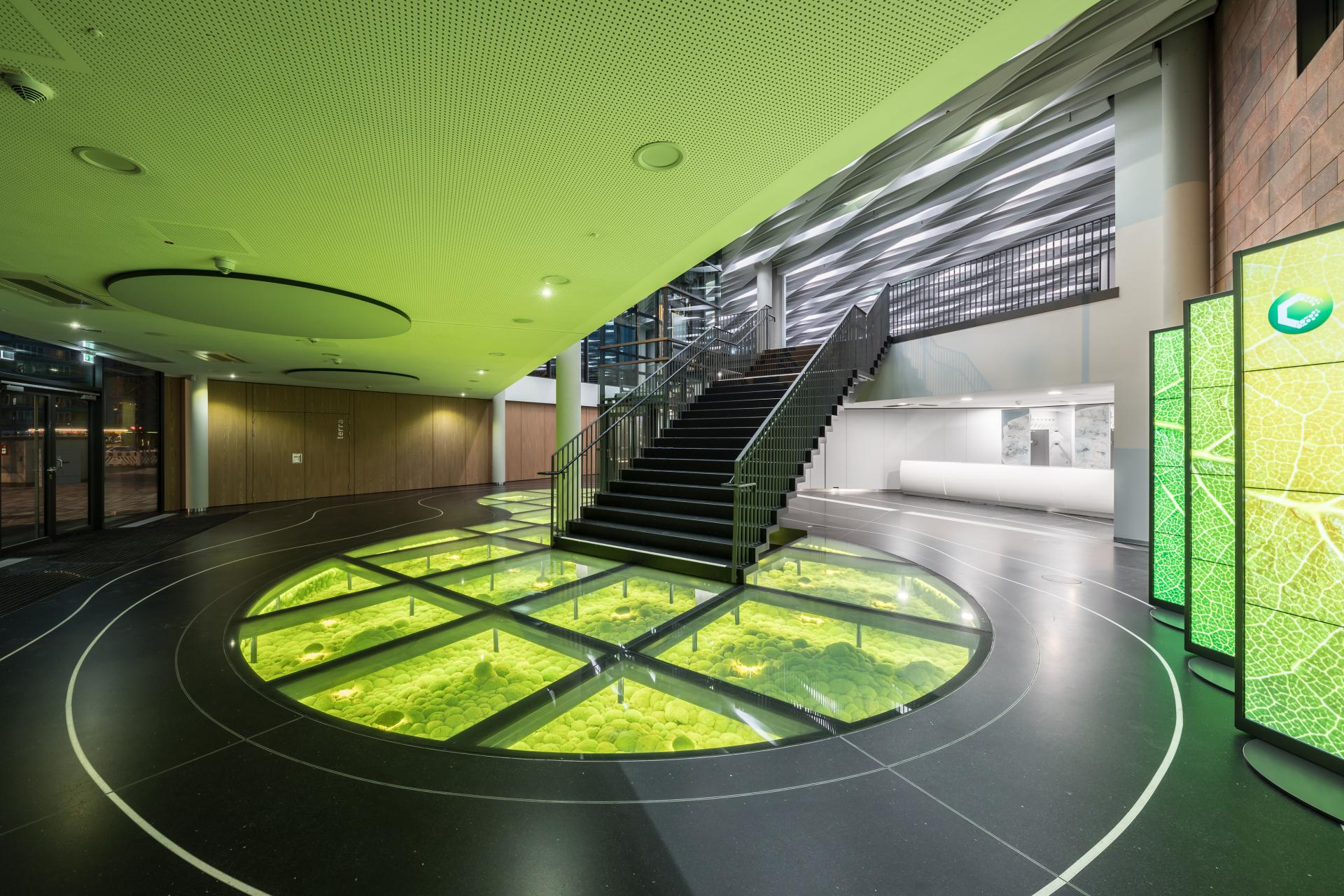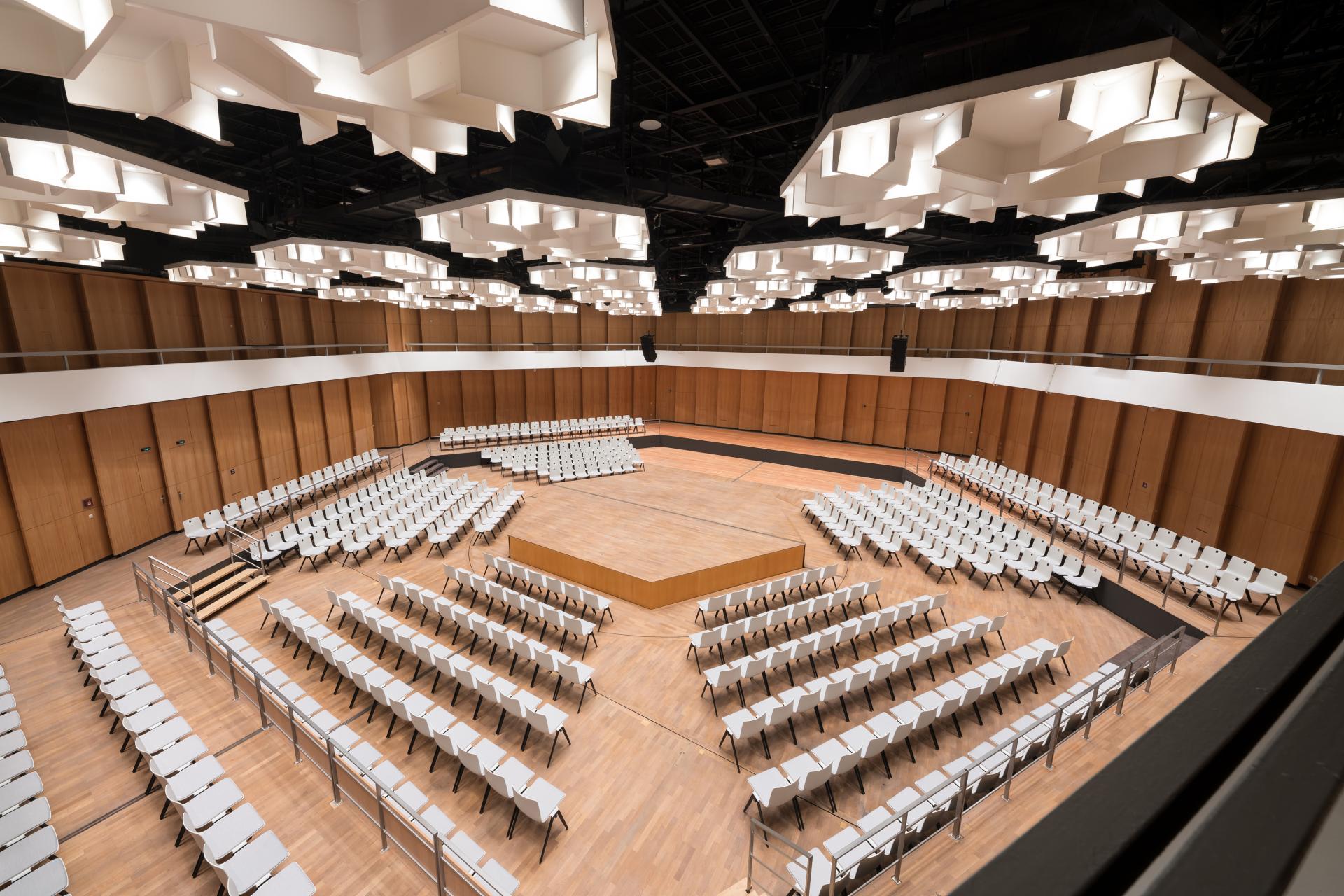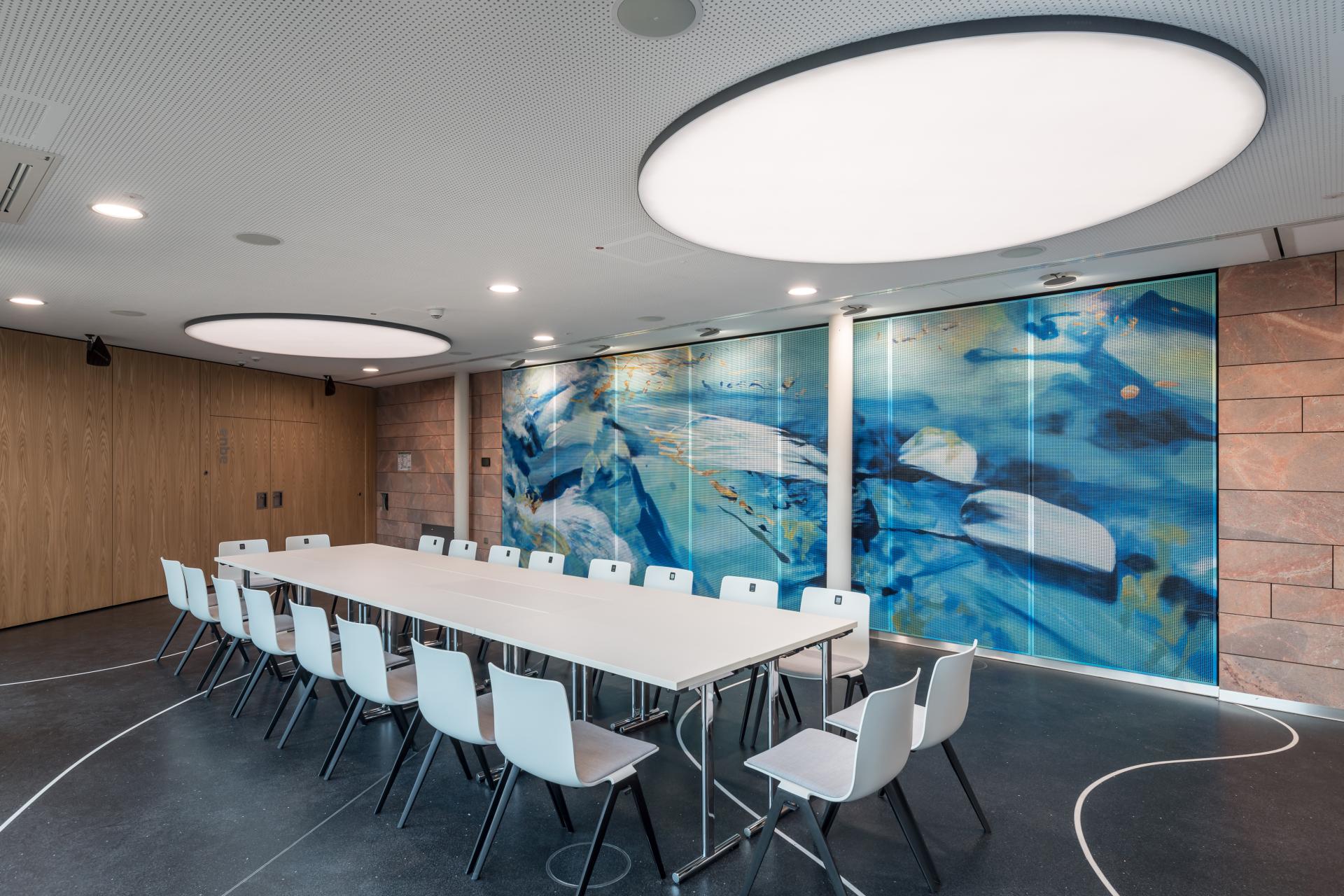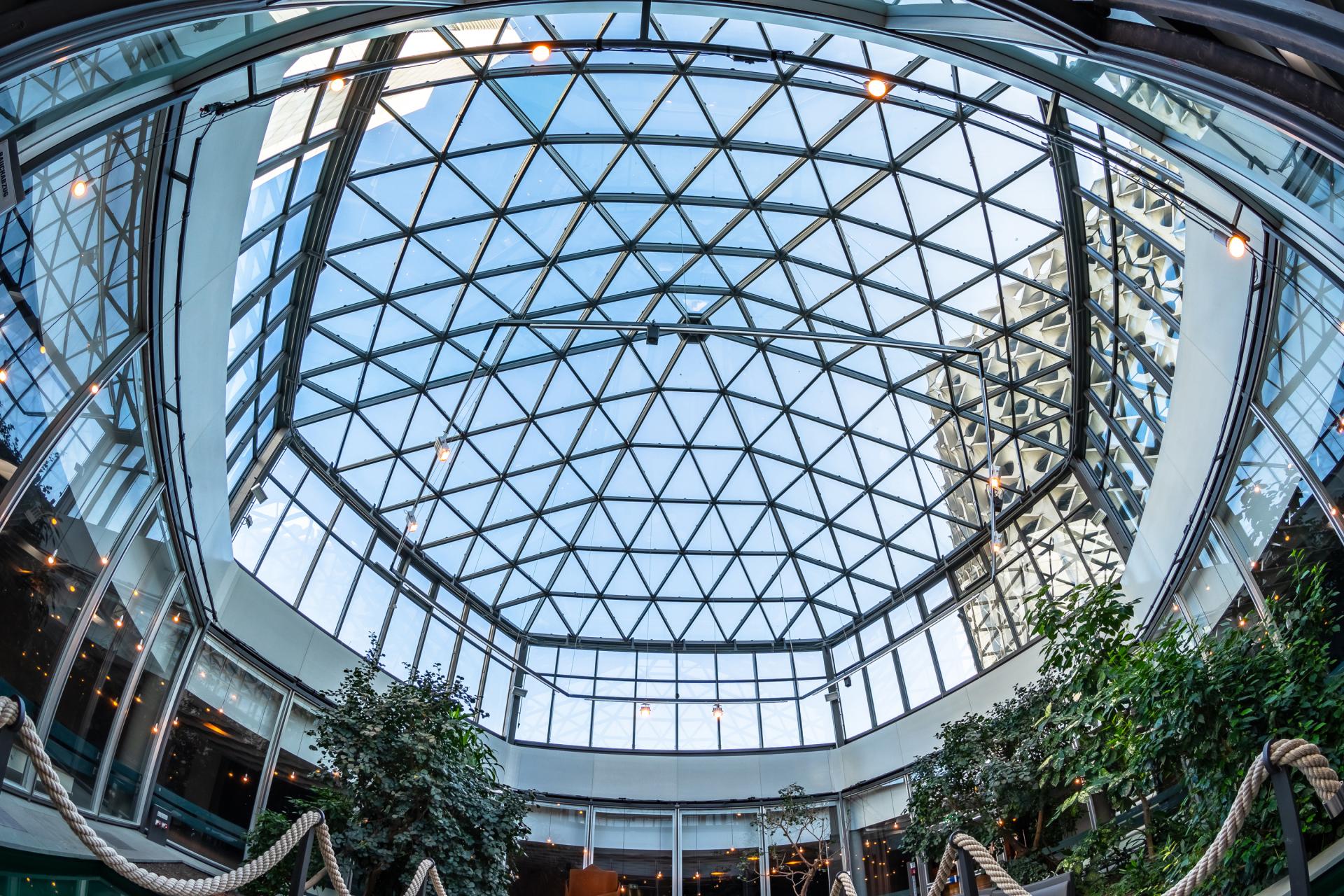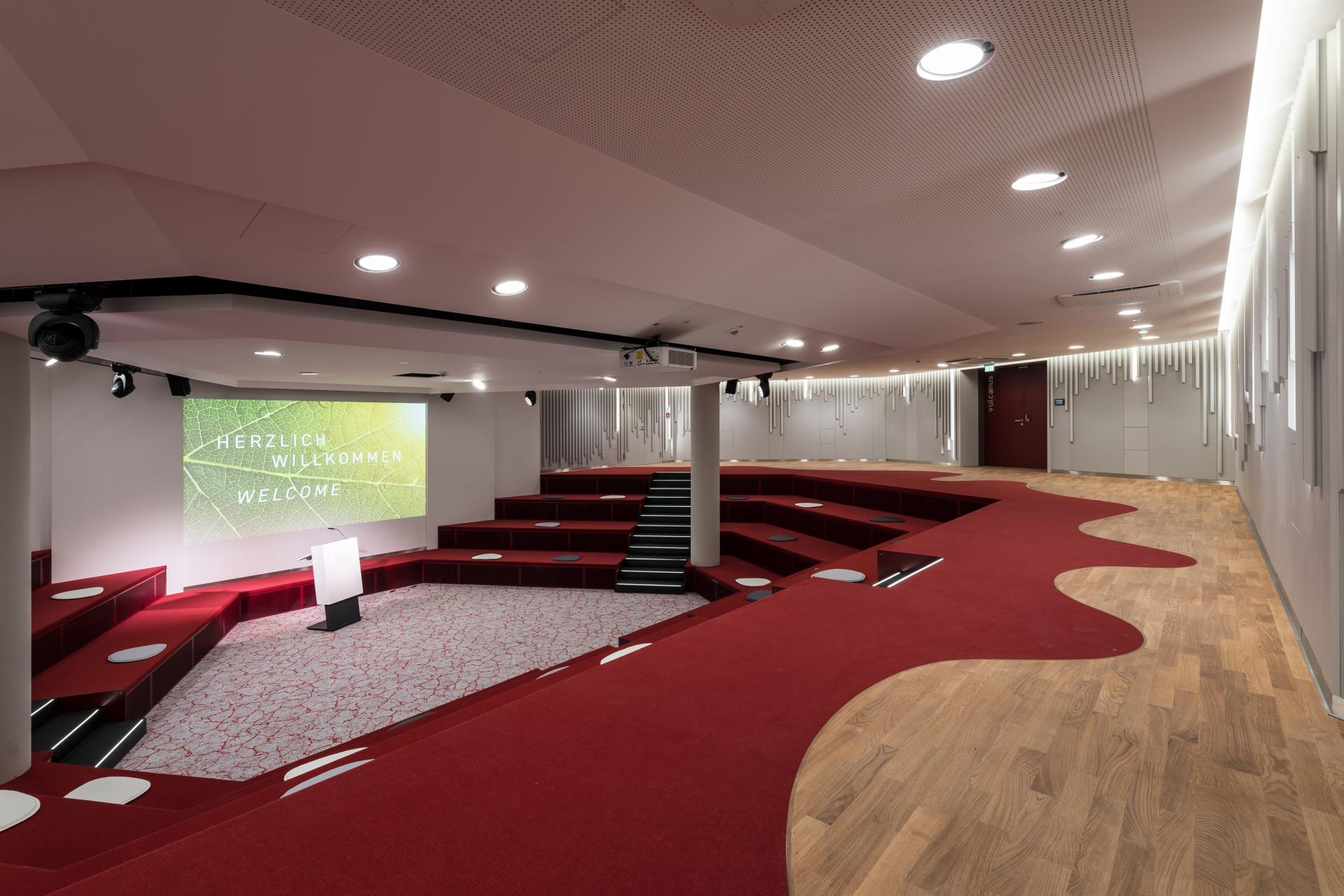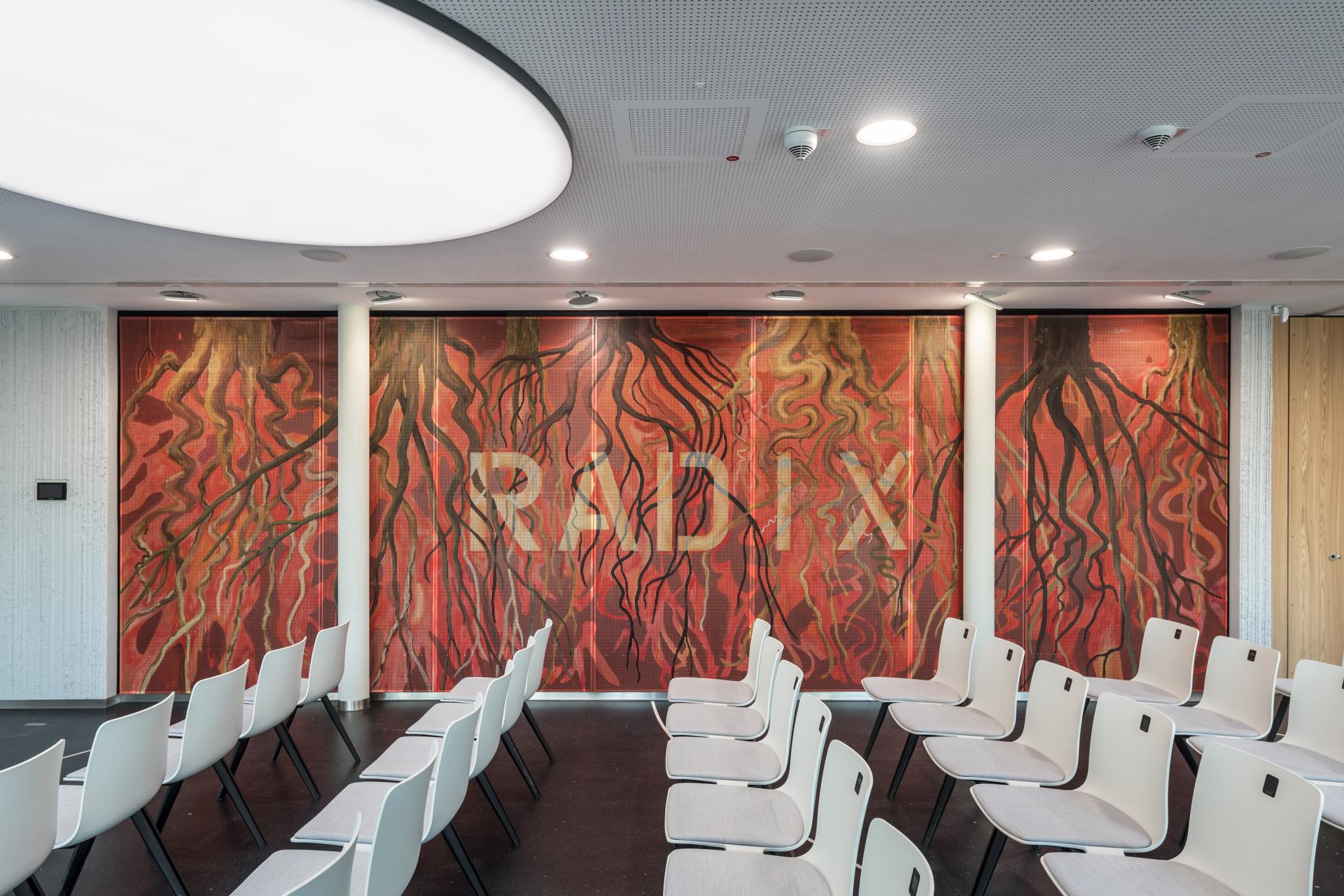Carlowitz Congresscenter Chemnitz
Basic information
Project Title
Full project title
Category
Project Description
In 2020/2021, a congress centre was added to Stadthalle Chemnitz, a listed building in Chemnitz city centre. Named after famous sustainability pioneer, Hans Carl von Carlowitz, its Centre for Knowledge and Conscience is also dedicated to sustainable events. It is an inspiring place to exchange ideas, learn together, and hold sustainable meetings. Using existing structures and resources, it is now a meeting point for residents of city and the region, and guests from Germany and Europe.
Project Region
EU Programme or fund
Description of the project
Summary
In 2020/2021, a congress centre was added to Stadthalle Chemnitz, a listed building in Chemnitz city centre. The Carlowitz Congresscenter Chemnitz not only bears the name of a famous sustainability pioneer, Hans Carl von Carlowitz, its Centre for Knowledge and Conscience is also dedicated to sustainable events. What’s more, sustainability has its roots in Chemnitz. Hans Carl von Carlowitz was born in the Rabenstein district of Chemnitz and came into contact with forestry management issues early in his life. Published in 1713, his work ‘Sylvicultura oeconomica’ (Instructions for Cultivating Wild Trees) advocated a careful, conscientious approach to nature and its resources. Its principle was, ‘Only as much wood may be felled as can grow back through regular reforestation.’ His insights are as modern as they are ancient and can be applied to any other sector or area of our lives.
Wood and other natural materials were used in the construction of the Stadthalle in 1974 and are also among the raw materials employed in the newly built extension. With instinct and expertise, the developers and architects joined the new building to the old, coming up with a functional, sustainable and unique ensemble. The architecture of the Stadthalle, the adjacent high-rise hotel and its striking façade are distinctive features of Chemnitz city centre. The Carlowitz Congresscenter blends in seamlessly with the existing structure of the building while retaining its special character. Meeting rooms and lounge areas are sensitively designed for conversation and learning, and sustainable encounters that add value in many different ways.
Key objectives for sustainability
In keeping with sustainable construction principles, the former side rooms of the Stadthalle were converted into meeting rooms and expanded to include a connecting foyer. The building’s new section is directly adjacent and has two levels. Converting a listed building is always more complex than constructing a new one because the appearance of the basic structure has to be retained. We were fortunate to have Peter Koch’s Chemnitz-based team of architects leading the planning phase. Koch was also involved in the construction of Stadthalle Chemnitz in the 1960s as part of head architect Rudolf Weißer’s team. In his view, it would not be possible to build a more sustainable property than this one. All existing features are still used. Natural and long-lasting materials such as Rochlitz porphyry (natural stone from the region), glass and wood were used for the building both then and now. Energy efficiency was considered at every stage. The open space in front of the building, once used as a car park, has been redesigned as a green forecourt with plane trees, raised beds and seating areas.
Interior designer Sybille Kasel brought the outdoors inside with her concept ‘Metamorphosis – natural atmosphere’. Nature provides a much more conducive environment for learning, living, relaxing and creativity. Looking through the large windowpanes at the entrance, the eye is irresistibly drawn to the illuminated floor underlaid with moss at the foot of the stairway. Other green oases are to be found elsewhere in the complex, whose visitors not only float above a bed of moss but also enjoy a wide range of enriching events. The Carlowitz Congresscenter’s mission is to make events in every possible way. Its extensive conference concept includes a wide range of elements.
Key objectives for aesthetics and quality
In contrast to the austere hexagonal architecture of the listed 1970s building, the interior features free, soft forms. This made it possible to create relationships in almost every perspective with the existing architecture and the various functions and facilities required. The result is a symbiosis between past and future, between long-standing tradition and innovative vision. The Carlowitz has distinctively open and inspiring spaces. Mobile, acoustic partitions, individual furnishing, lighting and shade and high-quality technical equipment enable the multifunctional premises to be adapted to suit every event. The building is easy to navigate and has an appealingly compact layout, clean air, comfortable temperatures, good ergonomics, digital interconnectivity and areas for relaxation.
From the root to the top of the tree: the Congresscenter rooms have Latin names taken from nature – from AQUA to VENTUS. Designs on the walls created by German artists bring the names to life. The wall designs complement the art in the Stadthalle, such as the Galileo sculpture by Prof. Fritz Cremer and Christa Sammler’s reliefs, which capture the experience of music. Architecture and art are in exciting symbiosis in the Carlowitz. Every area of the building exudes a warm, welcoming atmosphere.
Key objectives for inclusion
Sustainability happens when knowledge is multiplied by 1,000. In 2025 Chemnitz will be a European Capital of Culture. The pragmatic ‘get things done’ mindset that has already shaped the region for centuries played a key role in the success of the city’s application. And because creative makers not only shape culture but also drive the economy and society, we at the Carlowitz provide the space for presentations, networking and exciting discoveries. The Carlowitz aims to be an inspiring place to exchange ideas, learn together and hold sustainable meetings. Our vision is for it to be a centre for sustainable initiatives and players in our region. Together, we want to make a difference. No one can do everything, but everyone can do something.
Results in relation to category
In keeping with the idea of sustainability and the use of existing structures and resources, the Carlowitz Congresscenter was created to be a central point where Chemnitz residents and guests from across Germany and Europe can come together. The Carlowitz is a modern example of sustainable design with an eye to the past, due both to the resurgent allure of the “Ostmoderne” (Eastern European Modernism), which is foregrounding this style and prompting renewed discussion of it, and to new ideas and influences that are picking up on the ideas of the Ostmoderne and moving them forward. We hope that we have enabled people to look at the architecture of the past with a view to the future.
How Citizens benefit
The architect who was on the team that worked on the construction of the Stadthalle complex in 1974 was also involved in this project, so his expertise contributed to the conversion. Nearly all the planners and building companies came from Saxony, including those working on the interior design, ventilation and electrical planning, and landscape planning. Specific requirements were delivered by regional companies, including extremely low-profile ceiling lights for perfectly balanced lighting that were specially developed and produced by a company in Chemnitz. The outdoor furnishings are made of textile-reinforced concrete from a Chemnitz University of Technology lightweight materials research project. Local artists created the art for the meeting rooms, which was chosen via a public tender.
The Carlowitz is a venue for people from the city and the region. Sächsische Hans-Carl-von-Carlowitz-Gesellschaft e.V., a sustainability association, awards the Hans Carl von Carlowitz prize every year to an individual who is committed to sustainability. The ceremony has taken place at the Carlowitz since 2020. Regular lectures in the ‘Carlowitz Dialog’ series aim to take Carlowitz’s approach to sustainability a step further and embed it in practical action today. Our annual festival, ‘Think ahead – the sustainability festival’ is a platform for conversations about sustainability, society and the future. It includes presentations, workshops, innovative events, knowledge sharing, activities and inspiration.
Bee colonies have found a new home on the roof of the Carlowitz with the help of the sustainability working group at the Dr.-Wilhelm-André high school and the Imkerverein Chemnitz 1874 e.V. honey farm. We hope the hives will make a small contribution to protecting these endangered insects and counter the decline in the global bee population.
Innovative character
The existing structure of the Stadthalle building was converted and upgraded for the Congresscenter rather than being built from scratch. A modern, contemporary addition was created to be usable and fit the needs of the city and region, taking into account the building’s listed status and environmental and aesthetic requirements. The key focus is rooms with an open, sustainable design for new event formats that actively involve participants. The special design of the building’s interior spaces tells a unique story of nature and the elements.
Just before it opened, the Congresscenter and the entire Stadthalle complex received international Green Globe certification – the seal of sustainability. Our goal is to continue developing and improving based on regular certification to ensure that our activities and business are sustainable.
And the concept of sustainability does not end with the building’s architecture. We are transforming sustainability in nearly every area of the Carlowitz Congresscenter, from travel to the centre, catering, room fittings, service staff clothing and sustainable services through to a dedicated company working group that considers sustainability issues and then reports on them to the staff. We also run our own blog, ceimzeit.de, a digital platform where we explain the ideas behind the Carlowitz Congresscenter and offer insights without moralising. We use the physical building to present the idea of sustainability and circularity in as many ways as possible. The Carlowitz Congresscenter is thus a hybrid ambassador for sustainability.

